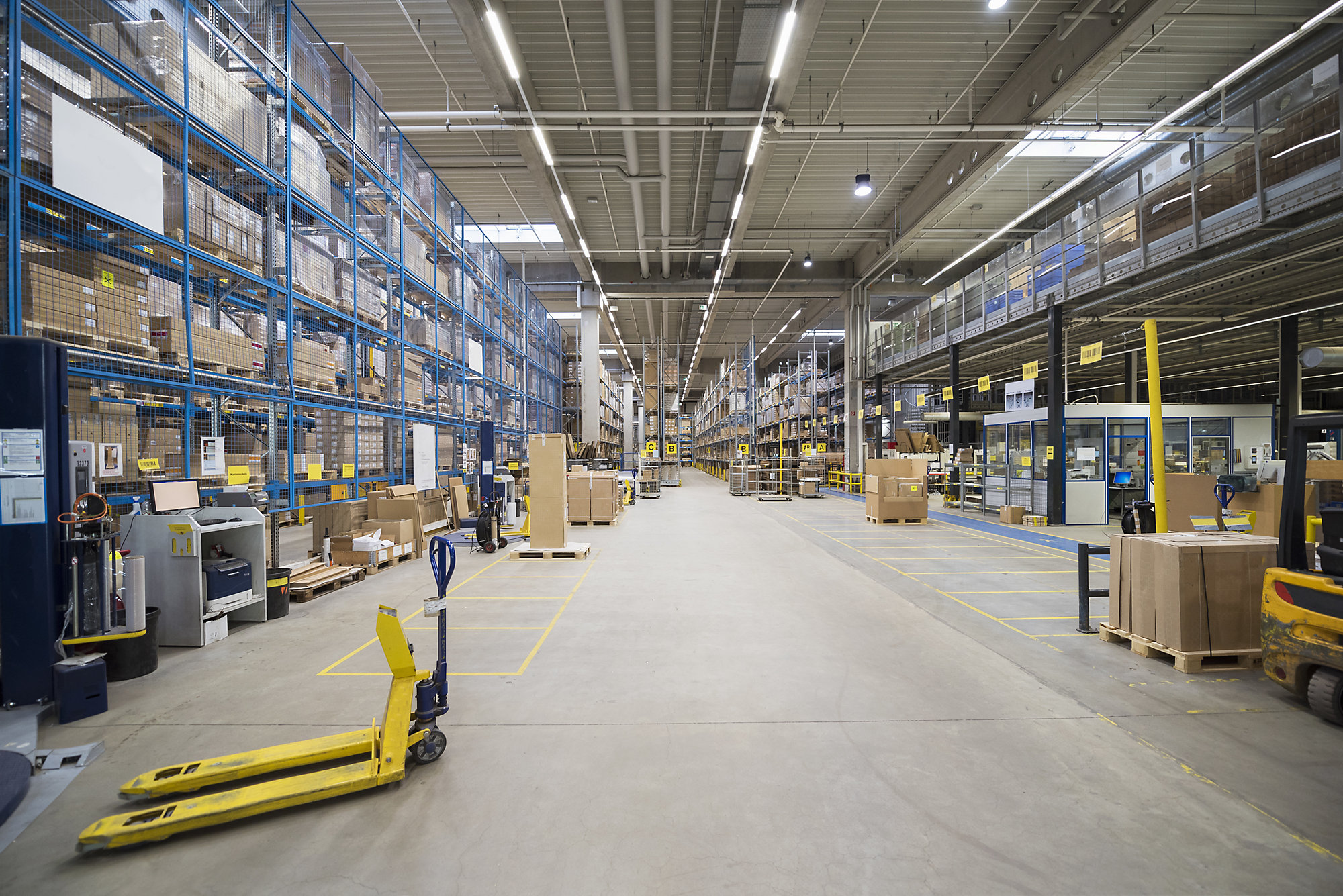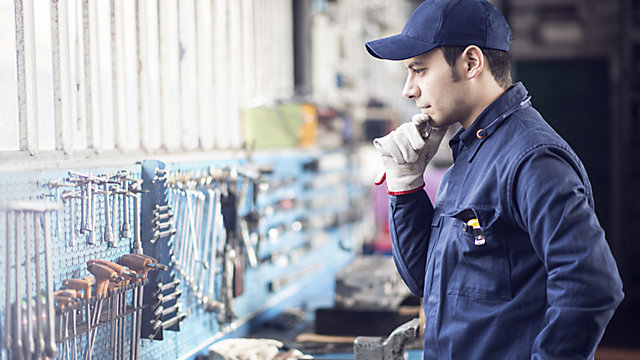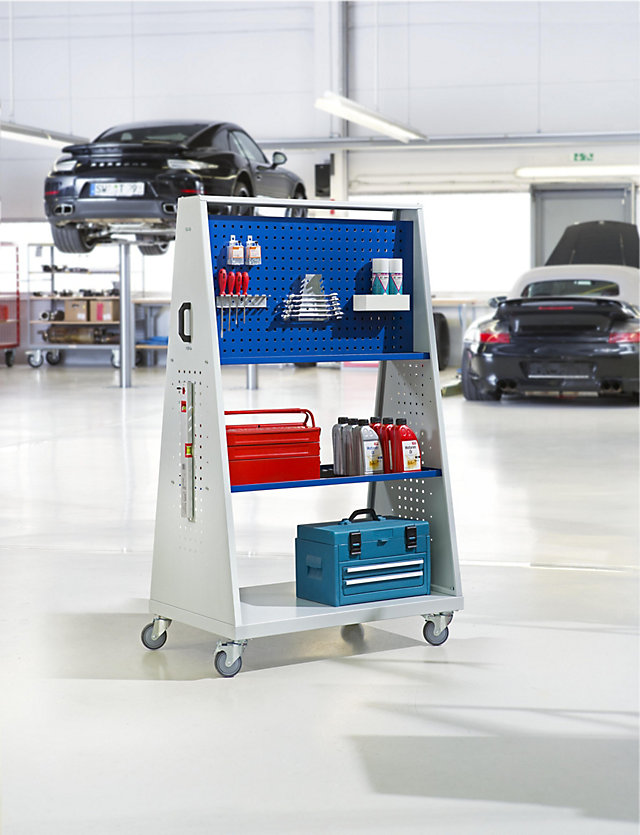
Good organisation is half the job
Everything exactly where it should be
If you’re a tradesperson thinking about starting your own business, you’re bound to benefit from a bit of creativity. However, when it comes to equipping the workshop, clutter is not the path you want to take: after all, it’s all about working efficiently in surroundings that allow you to do exactly that – functionality and ergonomics should be your number-one priority. Not only do they promote good organisation, but also make daily work more enjoyable because jobs get done faster. Of course, the needs of an automotive workshop differ from those of a carpenter, and a carpenter, in turn, has different needs to a sanitary and heating company.
Which tools are needed on a daily basis? Where can storage space be found? What will be stored there? Are there any other things that are only needed once a week – or even just once a year? Do chemicals and other hazardous materials need to be handled? An important utensil – and the hub of all activity in a workshop – is in most cases a workbench. There are, however, many questions to answer before choosing one: how much space should the workbench provide for work? How much storage space is needed underneath the bench – and what for? Will shelves suffice or would drawers be better? What is will you be working on – and for which weight must the workbench be designed? Will it be used primarily for working while sitting or standing – or both? The answers to these questions will help you ensure that everything has its proper place.
Mobile deployments
In many professions, you won’t always be working at a workbench where everything you need is ready and waiting. If your job is like this, then mobile tool and workshop trolleys are a great item of equipment, as the tools and utensils you need most often can be stored in an organised way and be easily transported to the place of use any time they’re needed. If material also needs to be moved, mobile assembly trolleys or mobile workstations are suitable for this job, and shelves, drawers or perforated panels can be added to make them suitable for any task.
Even if you only occasionally need to be mobile, mobile solutions are still a sustainable investment: after all, they are equally suitable for keeping things organised in one place. The mobile solutions also help to optimise existing work processes, such as the tried and tested “5S” method, a model recommended by professional associations and developed by the Taiichi Õno (1912–1990) from Japan. Õno was one of the co-founders of the successful Toyota production system in the 1950s. At the heart of “5S” is the idea that one should keep one’s workplace clean and well organised, and only have the tools and utensils needed at any given time, ideally in a way that allows them to be reached with one hand.
Once the ideal setup has been found, Õno recommends standardising equipment throughout the company, while also continuing to question existing structures and inspire further optimisations. For example, an ideally equipped assembly or tool trolley could be defined for a repetitive work process, one which is used in exactly the same way each and every time. In the end, the reward is significantly better organisation and clarity at the workplace and, ultimately, greater efficiency across production.
Mobile tool and workshop trolleys, for example, are suitable for cases like this, as the most frequently used tools and other resources can be stored in an organised way and are easy to transport to the place of use at any time. If material also needs to be moved, mobile assembly trolleys or mobile workstations are suitable for this job, and shelves, drawers or perforated panels can be added to make them suitable for any task.
Optimal storage

In many professions, you won’t always be working at a workbench where everything you need is ready and waiting. If your job is like this, then mobile tool and workshop trolleys are a great item of equipment, as the tools and utensils you need most often can be stored in an organised way and be easily transported to the place of use any time they’re needed. If material also needs to be moved, mobile assembly trolleys or mobile workstations are suitable for this job, and shelves, drawers or perforated panels can be added to make them suitable for any task.
Drawer cupboards provide a lot of storage space on a small surface area. Drawers with different heights allow both large tools and small parts to be stored. Practical drawer dividers such as dividers, plastic bins, plastic containers etc. help you maintain an overview at all times. You can also store tools in a well organised way with the help of perforated panels, which are easy to secure to the wall or to workbenches.
This also makes good advance planning important: what needs to be easy to access at all times? What isn’t needed very often? What is the weight of the parts that are being stored? Is there a risk of any of the stored substances leaking? For hazardous substances in small containers, there are special hazardous goods shelf units with mesh grid shelves and sump trays on the lowest shelf.
If the hazardous substances are particularly flammable or need to be kept under lock and key, purchasing a lockable hazardous goods storage cupboard that is fireproof and equipped with sump trays for liquids is recommended. By the way: cleaning agents, paints and lubricants are also usually hazardous to water and must therefore be stored in suitable cupboards.
The following products make storage even easier:
Working ergonomically
Once the basic workshop equipment is in place, then it’s time for detailed planning: is there a power connection everywhere one is needed? What kind of seating is needed for which work? And are all the workplaces lit in such a way that fatigue-free work is possible? Flexible power connections everywhere in the workshop are possible by using a cable reel, for example – it ensures that power is available exactly where it is needed, and after the work is done, the cable is safely stowed away without creating a tripping hazard.
When it comes to seating, mobile industrial stools and swivel chairs with gas lift height adjustment bring the furniture the flexibility and ergonomics required – they are suitable for a wide range of work activities and are easy to move around and use elsewhere. The lighting should be installed to create well illuminate workstations (at least 500 lux), while at the same time not creating any glare or shadows. This can be done by combining direct and indirect ceiling lighting. Workstation lamps – best are ones that can be adjusted and are dimmable – also ensure that there’s always the right light available at the workstation for the task at hand.

This is where you will find products for better vision:
The 5S rules
“Sorting” (Japanese: Seirii): everything that is not currently needed at the workplace is sorted out.
“Setting” (Seiton) / creating visible organisation: everything that is actually needed is put in the most practical place. Any missing tools etc. are therefore noticed right away.
“Cleaning” (Seiso): the workplace is kept clean. Any explanations necessary for the work processes are also created in this step.
“Standardising” (Seiketsu): workplace design standards are set and implemented systematically.
“Continually improving” (Shitsuke): every employee is required to take a moment to monitor, question and optimise compliance with the standards, doing so daily if possible.
Contact us!
We are available to answer any questions, free of charge.



